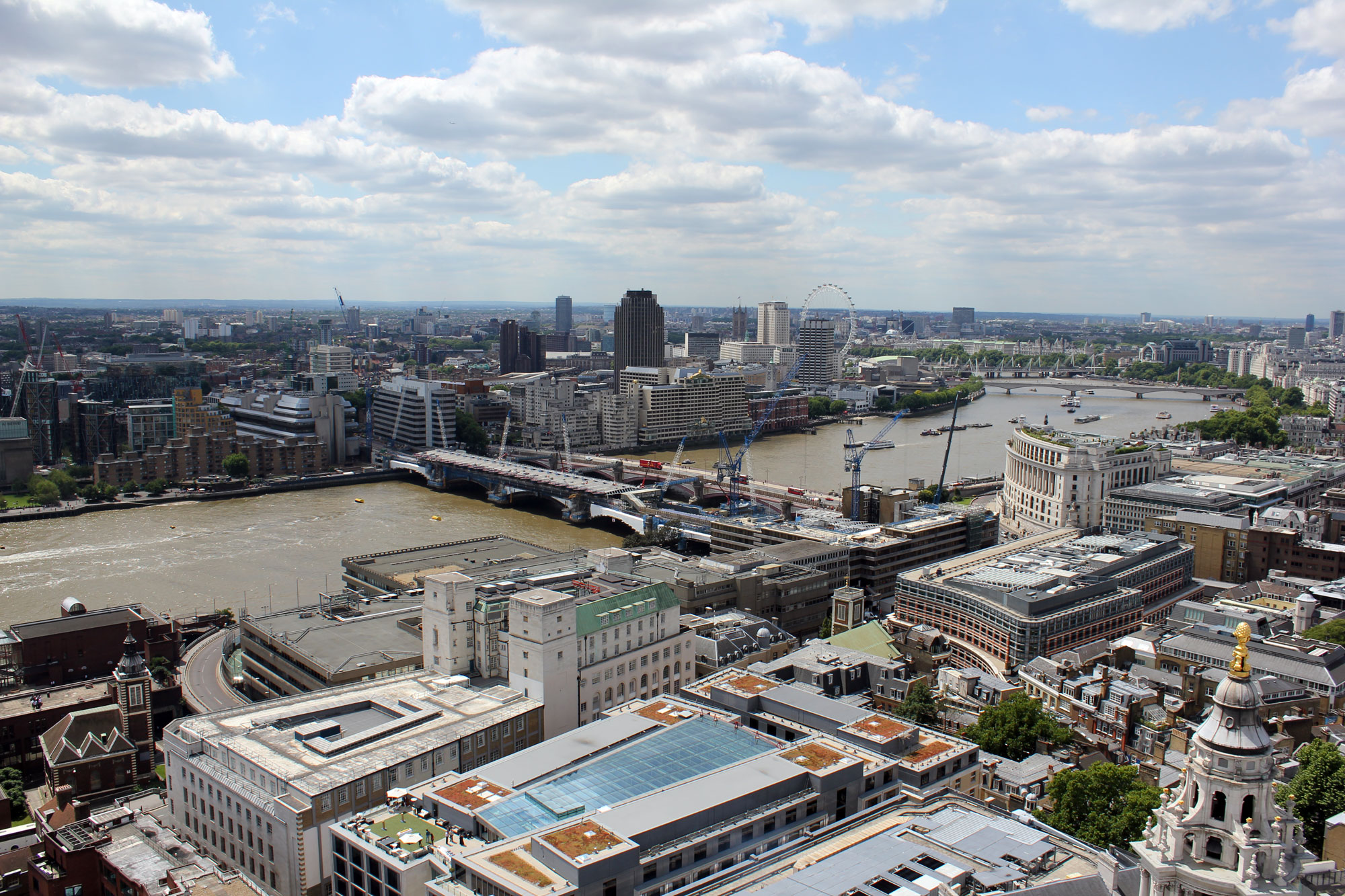Alongside New York and Tokyo, the city of London is a multifaceted global entity, producing one of the world's most influential financial and cultural centers, while commanding governmental decisions as the capital city and largest metropolitan area in the United Kingdom. With an official population of around 8 million (14 million in metropolitan area) and hosting the most international visitors of any city in the world, Greater London is considered the largest city in Western Europe and the European Union, making it crowded, vibrant and truly a multicultural city.
Urban Anthill
While visiting the city, someone had described to me that London was a giant anthill, which I thought was fairly sarcastic, but would later find to be somewhat true. At first glance, the city is not 'tall' by any means compared to other large metropolitan cities, but given the population and infrastructure in the area, it is a very dense and diverse city in terms of living and working in the city. With that, you add the foundation of the urban fabric based on a system setup centuries ago with no grid in sight, the streets become winding and cramped throughout the region, almost giving a claustrophobic feeling in some areas. Finally, the amount of urban strata throughout the more than a millennia of the city's existence, layering and combining the past with the present (including a whole city of tunnels underneath the surface), creates an interesting hybridization of urban development. Add to that, the incredible amount of commuter and visitor population (6 million) with the immediate city population all swarming and navigating throughout the urban framework in shoes, cars, buses or trains. London can be described as an urban ant farm.
History
Located on the River Thames in Southeast England for more than two millennia, London's long history goes back to its founding by the Roman Empire, originally referring to it as Londinium. After the battle of Hastings in 1066, William the conqueror ordered the construction of the White Tower (core of today's Tower of London) and the city's urban sprawl radiated from that point. With this foundation and geographic location, London prospered and increased in global importance throughout the medieval period, surviving devastating challenges like the plagues and the 1666 Great Fire. By 1720 London had 750,000 inhabitants and was the centre of a growing world empire, and it only continued to flourish during the Victorian era of the 19th century and the Industrial Revolution. By the time WWII had began, the population of London had reached around 4 million.
Ruined Roman Wall in London`s Financial District
During World War II, London, as many other British cities, suffered severe damage, being bombed extensively by the Luftwaffe as a part of The Blitz. Using large landmarks, like St. Paul's Cathedral as location devices, German pilots navigated numerous raids, unloading tons of high explosive all over the city. The city suffered severe damage with tens of thousands of buildings destroyed, and hundreds of thousands of people made homeless by war's end. At the end of the war in 1945 planners and politicians eagerly seized the opportunity to reconstruct and modernize London as a city which provided decent standards of living for all, even to demolish buildings that were not deemed unsafe. During the 1950s and 1960s the skyline of London altered dramatically as tower blocks were erected throughout the city, although these later proved unpopular. In a bid to reduce the number of people living in overcrowded housing, a policy was introduced of encouraging people to move into newly built towns surrounding London.
Tower of London, with a modern backdrop
Orientation
The M25 circular motorway encompasses the area broadly regarded as Greater London. Cutting the circle in two is the city's main geographical feature - the River Thames. Within the center of the circle contains a two-centre city, Westminster and The City (historic London). East of Westminster, The City is the capital's financial district, covering roughly the square mile of the original settlement bordered by the ruined roman city walls, with St. Paul's Cathedral at the center. The areas east of the City are collectively known as the East End (home of the new Olympics). The West End, on the city's other flank, is effectively the centre of London currently, and where you'll find iconic landmarks such as Parliament and Trafalgar Square. Historically, The land to the west of the City (part of the parish of Westminster) was prime farming land and made good area for building elaborate structures. The land to the east was flat, marshy and cheap, good for cheap housing and industry, and later for docks. Also the wind blows from west to east, and the Thames (into which the sewage went) flows from west to east, so the West End was up-wind and up-market, the East End was where people worked for a living.
Construction Heavy: One of the many new projects throughout London
On a much larger meaning, London has absorbed numerous surrounding towns and villages over the centuries, including large portions of the surrounding "home counties". The term Greater London embraces Central London together with all the outlying suburbs that lie in one continuous urban sprawl within the lower Thames valley. Today, numerious construction projects litter Greater London, especially in the city centre and East End. Mostly focused on infastructure modernization and expansion, the city is in preperation for the world stage when it hosts the 2012 Summer Olympics. Notable areas of construction include the Bankside area, with new high-end residential buildings and the new Shard London Bridge (to be the tallest structure in the EU), and Stratford City (home of the new Olympic Park).







